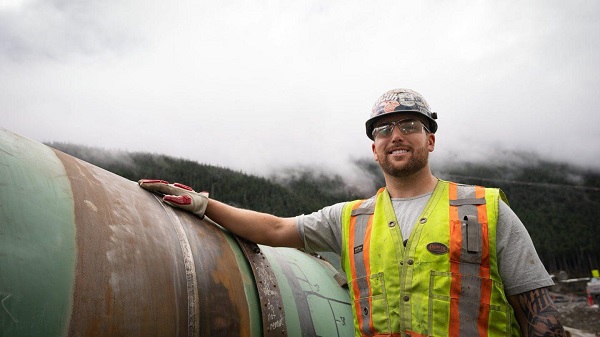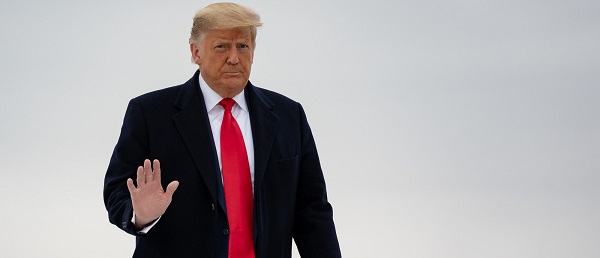Business
Here are four ways the next federal government can cut spending

From the Fraser Institute
By Jake Fuss and Grady Munro
With a federal election on the horizon, it’s worth reflecting on the Trudeau government’s extraordinary fiscal legacy, which includes record-high levels of spending (even after excluding emergency COVID spending), an uninterrupted string of budget deficits, a near doubling of the federal debt from $1.1 trillion to $2.1 trillion, and sky-high federal debt interest payments, which will reach a projected $51.9 billion (more than all GST revenue) this fiscal year.
Clearly, the next federal government, whoever that may be, must get smarter about government spending. Fortunately, as noted in our new study published by the Fraser Institute, there are many areas within the federal government to find savings.
For example, this fiscal year (2024/25) the government will spend a projected $3.5 billion through the Canada Infrastructure Bank (CIB). Established by the Trudeau government in 2017, the CIB is a federal Crown corporation tasked with investing and attracting investment in infrastructure projects across Canada. Despite approving “investments” totalling $13.2 billion (as of the fourth quarter of 2023-24), the CIB has demonstrated an alarming lack of progress. As of July 2024, only two (out of 76) CIB-funded projects had been completed—the purchase of 20 electric buses in Edmonton and the construction of two solar facilities in Calgary. Small wonder that a 2022 multi-partisan House of Commons committee report recommended the government abolish the CIB.
To find more savings, the government should look at its seven Regional Development Agencies (RDAs), which provide financial assistance (a.k.a. corporate welfare) to businesses in specific regions across the country. Total spending will reach a projected $1.5 billion this fiscal year. But research shows that corporate welfare does little to nothing to promote widespread economic growth but simply allows the government to pick winners and losers in the free market. And rather than using concrete objectives and results to justify their existence, the RDAs rely on vague platitudes such as “businesses are growing” and “communities are developing economically.”
The government should also eliminate its so-called “Strategic Innovation Fund,” which spends tax dollars (a projected $2.4 billion this fiscal year) to simply shift jobs and investment away from some firms and industries to firms and industries favoured by the government, with no net benefit for the overall economy. And “Global Innovation Clusters,” which incentivize firms to spend time and resources modifying their businesses to secure government grants (worth a projected $202.3 million this fiscal year) rather than developing new and improved goods and services.
Finally, there’s the Green Municipal Fund (GMF), which uses federal tax dollars (including a projected $530 million this fiscal year) to bankroll municipal projects that purportedly accelerate the transition to “net-zero” greenhouse gas (GHG) emissions. But several current projects (e.g. “climate-friendly” home tours, funding for climate advocacy groups in Ottawa) will not reduce GHG emissions in any measurable way. In other words, the GMF is spending taxpayer dollars on projects that make no progress towards the GMF’s stated goal.
In total, our study highlights eight areas where the federal government should cut spending, with potential savings totalling $10.7 billion this fiscal year alone. By cancelling these wasteful programs, the government could eliminate roughly one-quarter of the current budget deficit.
Until policymakers in Ottawa get serious about cutting wasteful spending, budget deficits will likely continue. Smaller and smarter government in Ottawa is both possible and necessary.
2025 Federal Election
Next federal government should end corporate welfare for forced EV transition

From the Fraser Institute
By Tegan Hill and Jake Fuss
Corporate welfare simply shifts jobs and investment away from other firms and industries—which are more productive, as they don’t require government funding to be economically viable—to the governments’ preferred industries and firms, circumventing the preferences of consumers and investors. And since politicians spend other people’s money, they have little incentive to be careful investors.
General Motors recently announced the temporary closure of its electric vehicle (EV) manufacturing plant in Ontario, laying off 500 people because its new EV isn’t selling. The plant will shut down for six months despite hundreds of millions in government subsides financed by taxpayers. This is just one more example of corporate welfare—when governments subsidize favoured industries and companies—and it’s time for the provinces and the next federal government to eliminate it.
Between the federal government and Ontario government, GM received about $500 million to help fund its EV transition. But this is just one example of corporate welfare in the auto sector. Stellantis and Volkswagen will receive about $28 billion in government subsidies while Honda is promised $5 billion.
More broadly, from 2007 to 2019, the last pre-COVID year of data, the federal government spent an estimated $84.6 billion (adjusted for inflation) on corporate welfare while provincial and local governments spent another $302.9 billion. And crucially, these numbers exclude other forms of government support such as loan guarantees, direct investments and regulatory privileges, so the actual cost of corporate welfare during this period was much higher.
Of course, politicians claim that corporate welfare benefits workers. Yet according to a significant body of research, corporate welfare fails to generate widespread economic benefit. Think of it this way—if the businesses that received subsidies were viable to begin with, they wouldn’t need government support. So unprofitable companies are kept in business through governments’ support, which can prevent resources, including investment and workers, from moving to profitable companies, hurting overall economic growth.
Put differently, rather than fuelling economic growth, corporate welfare simply shifts jobs and investment away from other firms and industries—which are more productive, as they don’t require government funding to be economically viable—to the governments’ preferred industries and firms, circumventing the preferences of consumers and investors. And since politicians spend other people’s money, they have little incentive to be careful investors.
Governments also must impose higher tax rates on everyone else to pay for corporate welfare. In turn, higher tax rates discourage entrepreneurship and business investment—again, which fuels economic growth. And the higher the tax rates, the more economic activity they discourage.
GM’s EV plant shut down once again proves that when governments try to engineer the economy with corporate welfare, workers will ultimately lose. It’s time for the provinces and the next federal government—whoever it may be—to finally put an end to this costly and ineffective policy approach.
Business
Hudson’s Bay Bid Raises Red Flags Over Foreign Influence

From the Frontier Centre for Public Policy
A billionaire’s retail ambition might also serve Beijing’s global influence strategy. Canada must look beyond the storefront
When B.C. billionaire Weihong Liu publicly declared interest in acquiring Hudson’s Bay stores, it wasn’t just a retail story—it was a signal flare in an era where foreign investment increasingly doubles as geopolitical strategy.
The Hudson’s Bay Company, founded in 1670, remains an enduring symbol of Canadian heritage. While its commercial relevance has waned in recent years, its brand is deeply etched into the national identity. That’s precisely why any potential acquisition, particularly by an investor with strong ties to the People’s Republic of China (PRC), deserves thoughtful, measured scrutiny.
Liu, a prominent figure in Vancouver’s Chinese-Canadian business community, announced her interest in acquiring several Hudson’s Bay stores on Chinese social media platform Xiaohongshu (RedNote), expressing a desire to “make the Bay great again.” Though revitalizing a Canadian retail icon may seem commendable, the timing and context of this bid suggest a broader strategic positioning—one that aligns with the People’s Republic of China’s increasingly nuanced approach to economic diplomacy, especially in countries like Canada that sit at the crossroads of American and Chinese spheres of influence.
This fits a familiar pattern. In recent years, we’ve seen examples of Chinese corporate involvement in Canadian cultural and commercial institutions, such as Huawei’s past sponsorship of Hockey Night in Canada. Even as national security concerns were raised by allies and intelligence agencies, Huawei’s logo remained a visible presence during one of the country’s most cherished broadcasts. These engagements, though often framed as commercially justified, serve another purpose: to normalize Chinese brand and state-linked presence within the fabric of Canadian identity and daily life.
What we may be witnessing is part of a broader PRC strategy to deepen economic and cultural ties with Canada at a time when U.S.-China relations remain strained. As American tariffs on Canadian goods—particularly in aluminum, lumber and dairy—have tested cross-border loyalties, Beijing has positioned itself as an alternative economic partner. Investments into cultural and heritage-linked assets like Hudson’s Bay could be seen as a symbolic extension of this effort to draw Canada further into its orbit of influence, subtly decoupling the country from the gravitational pull of its traditional allies.
From my perspective, as a professional with experience in threat finance, economic subversion and political leveraging, this does not necessarily imply nefarious intent in each case. However, it does demand a conscious awareness of how soft power is exercised through commercial influence, particularly by state-aligned actors. As I continue my research in international business law, I see how investment vehicles, trade deals and brand acquisitions can function as instruments of foreign policy—tools for shaping narratives, building alliances and shifting influence over time.
Canada must neither overreact nor overlook these developments. Open markets and cultural exchange are vital to our prosperity and pluralism. But so too is the responsibility to preserve our sovereignty—not only in the physical sense, but in the cultural and institutional dimensions that shape our national identity.
Strategic investment review processes, cultural asset protections and greater transparency around foreign corporate ownership can help strike this balance. We should be cautious not to allow historically Canadian institutions to become conduits, however unintentionally, for geopolitical leverage.
In a world where power is increasingly exercised through influence rather than force, safeguarding our heritage means understanding who is buying—and why.
Scott McGregor is the managing partner and CEO of Close Hold Intelligence Consulting.
-

 2025 Federal Election23 hours ago
2025 Federal Election23 hours agoBREAKING: THE FEDERAL BRIEF THAT SHOULD SINK CARNEY
-

 2025 Federal Election24 hours ago
2025 Federal Election24 hours agoCHINESE ELECTION THREAT WARNING: Conservative Candidate Joe Tay Paused Public Campaign
-

 2025 Federal Election1 day ago
2025 Federal Election1 day agoOttawa Confirms China interfering with 2025 federal election: Beijing Seeks to Block Joe Tay’s Election
-

 2025 Federal Election1 day ago
2025 Federal Election1 day agoReal Homes vs. Modular Shoeboxes: The Housing Battle Between Poilievre and Carney
-

 2025 Federal Election10 hours ago
2025 Federal Election10 hours agoMark Carney Wants You to Forget He Clearly Opposes the Development and Export of Canada’s Natural Resources
-

 Business13 hours ago
Business13 hours agoHudson’s Bay Bid Raises Red Flags Over Foreign Influence
-

 2025 Federal Election1 day ago
2025 Federal Election1 day agoHow Canada’s Mainstream Media Lost the Public Trust
-

 2025 Federal Election10 hours ago
2025 Federal Election10 hours agoCanada’s pipeline builders ready to get to work





